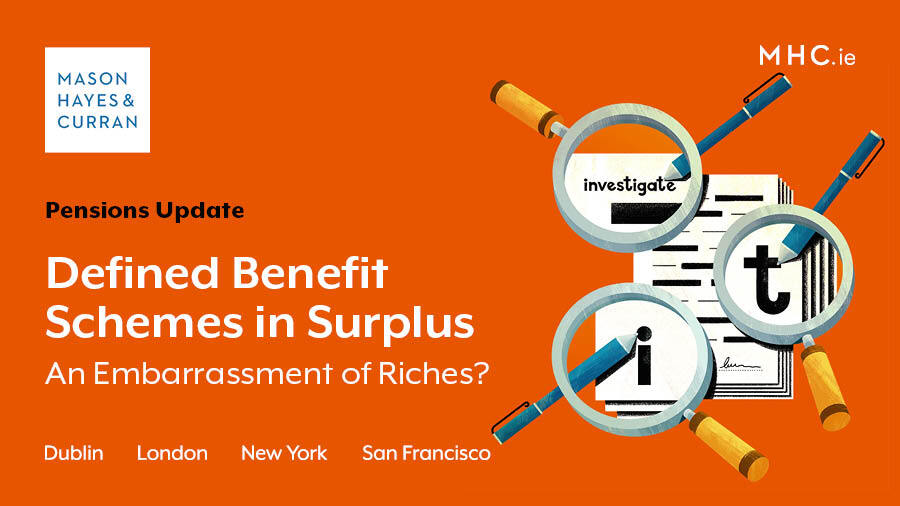
The Surplus Explained
Defined Benefit (DB) pension scheme liabilities include the payment of pensions and benefits to pensioners and deferred members. To meet these liabilities, DB schemes will need to purchase certain classes of bonds, so their liabilities are said to be sensitive to changes in bond yields. Bond yields have been rising due to numerous interest rate increases in the past year.
A pension scheme is said to be in surplus when the value of its assets exceeds the value of its liabilities (i.e. future benefit payment obligations) on a given basis.
While all this may seem like good news for DB scheme trustees and employers, the existence of a surplus has to be considered in the context of the future of each scheme. It will be necessary to consider various issues such as who owns the surplus, how the surplus will be used and whether previously agreed contribution rates for the scheme are still appropriate.
Considerations
Where a DB scheme is in surplus, a question may arise about the ownership of the surplus amount. This question can usually be addressed by an analysis of the scheme’s trust deed and rules.
In any instance where a valuation discloses a surplus in excess of 10% of the value of the scheme’s assets, the matter should be brought to the attention of the Revenue Commissioner’s Large Cases Division. Each case will be dealt with on an individual basis. It would be normal for any scheme surplus to be disposed of by augmenting member benefits within the approvable Revenue limits.
Where contribution rates to the scheme have been agreed in the last 12 to 18 months, they are unlikely to have taken account of a big improvement in funding levels for the scheme. It may be necessary for a scheme’s trustees and its employer to negotiate a new contribution rate or even a period where contributions are suspended. In some circumstances, part of the surplus might have to be refunded to the employer and taxed as a trading receipt.
Trapped?
Employers may also look to receive a balance sheet credit for a DB scheme surplus and accounting rules can come into play here. If an employer can show that it has an unconditional right to a surplus under the rules, it can recognise this on its balance sheet. If not, the employer will be restricted on how the surplus is being reported meaning that they will not receive balance sheet credit for it. Where such a scenario arises, the surplus is referred to as “trapped”.
Preferences
Every stakeholder will have a preference in how a surplus should be utilised. Employers may be interested in a refund. Trustees will need to abide by their legal duties to the members of the scheme and members will inevitably look for their share of the surplus by way of additional benefits.
Conclusion
While a surplus is generally good news for DB scheme liabilities, rising interest rates would have been totally unanticipated by market experts and advisors even during the pandemic. A surplus may require a rethink of scheme funding plans and will always give rise to competing interests. It is important that trustees and employers obtain the best legal advice to find the right solution.
For more information, contact a member of our Pensions team.
The content of this article is provided for information purposes only and does not constitute legal or other advice.
Share this:






